Search for answers or browse our knowledge base.
Can't find the answer you need here? Contact our support team and we'll gladly help you.
How to set up your branding within Light Blue
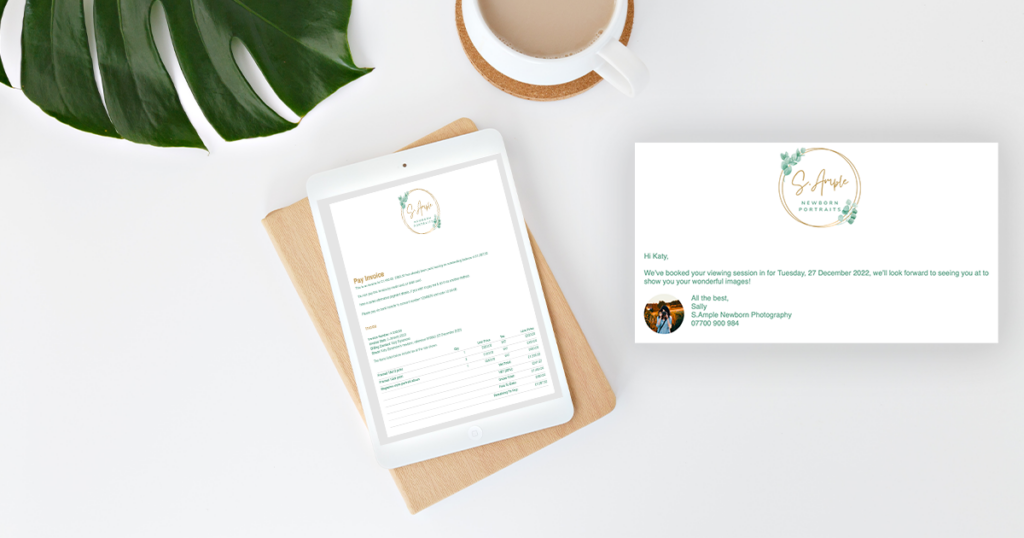
No doubt you’ve spent time and effort (and money!) creating your photography brand. One that appeals to your customers and is instantly recognisable. So wherever and whenever you use this, you want it to be consistent; whether it’s on your website, social media feeds or throughout your client’s journey with you.
Light Blue allows you to add your branding to all the client communication that you manage through the application; from quotes to contracts, emails, forms, and invoices – and everything in-between!
There are a few different areas where your branding needs to be added and this guide walks you through each of these so that your clients always receive great looking, on-brand communication.
The four areas needing to be populated with your branding are:
- Printed branding (within the desktop app) for quotes, invoices, and receipts.
- Client portal branding (online through your account) for contracts, forms, questionnaires, online invoicing and overall email design.
- Contract PDF (also online through your account) for the signed contract PDF sent to your client.
- Email signature (back within the desktop app) to add to your emails.
This guide details the steps to set up one brand in your Light Blue account; the ‘Standard branding” option. If you have multiple brands across your business, Light Blue gives you the flexibility to tailor your client communication accordingly. Read this guide first to give you an overview of the basic process.
1. Setting up printed branding within the Light Blue desktop app
Printed branding refers to the branding added to documents that are created within the Light Blue app that might be printed out, or which may simply be viewed as a PDF; like your quotes and invoices. The easiest way to imagine what this could look like, is to think of a traditional business letterhead that includes branding, a company address, other contact details and perhaps some legal information.
- First of all you’ll need to create your letterhead as a PDF. The simplest way to do this is to use Word or Pages to design your letterhead and then use the ‘Export’ option to create your PDF. Alternatively, you could use an application like Adobe Acrobat or one of a number of free PDF creators available online. NB. Remember to create your PDF in the paper size you generally use; usually A4 or US letter.
- This PDF can now be added to Light Blue in the “Printing” section of Preferences in the first tab “Branding”.
- Click on “Choose PDF …” to upload it. NB. Depending on the size of your header and footer within your PDF, you may need to adjust the different margin options available under the “Margins” tab so that your branding is not overlaid with the document contents.
- You can also choose the type of font in your printed branding by going to the “Fonts & Sizes” tab. Though do make sure the font you choose is installed on all devices that you use Light Blue on.
⭐️ Top tip: Whilst there is the option to add an individual header and footer to create your printed branding, our recommendation is to use the “Background PDF” option. This creates a better quality file and allows you to be more creative with your letterhead, like adding elements such as a border around the page.
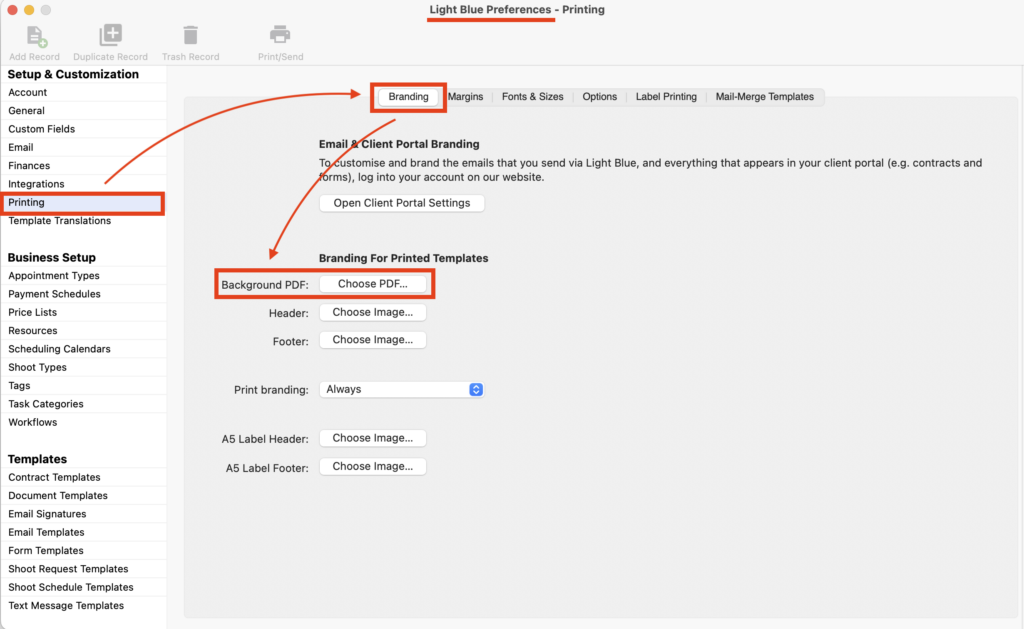
2. Setting up your online client portal branding
With Light Blue’s powerful online client portal you have the opportunity to maximise your clients online and email client experience by customising all the different elements to match your branding.
- Log into your online account through the “My Account” tab you can see top right on our website and head to the “Branding” section within “Client Portal settings”. 👉 Follow this link to take you to the login page and then directly to the “Branding” section.
- You can then customise the “Standard branding” option showing in the dropdown menu; as you scroll down the page you’ll see you have the option to change the fonts, images, colours and the various different styling elements, like fields and buttons, to fit your brand.
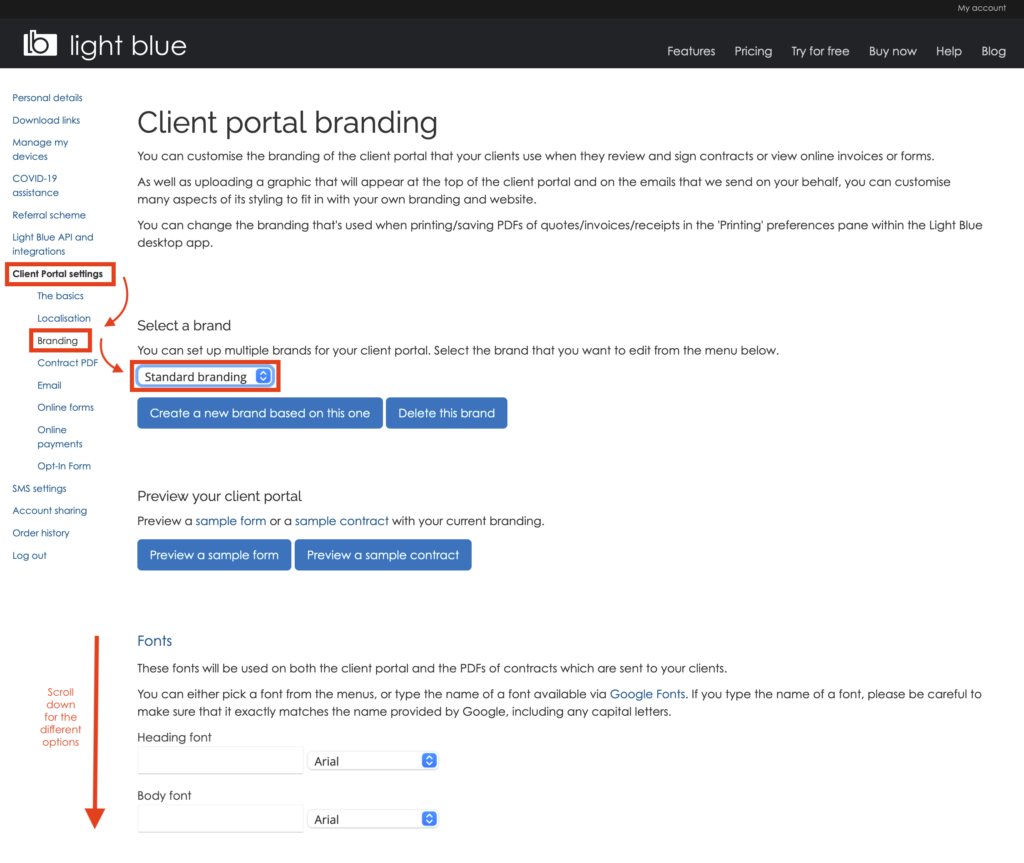
- Review and refine your design by clicking on both “Preview a sample form” and “Preview a sample contract” until you’re happy with how it all looks.

3. Setting up your contract PDF online
Whilst your client will see your branding when they view their contract online (assuming of course you’ve followed section II. above!), you must also include your branding in the contract PDF. This is a PDF of their contract sent to them after they’ve signed it.
- If you’re not already logged in, log into your online account through the “My Account” tab you can see top right on our website and head to the “Contract PDF” section within “Client Portal settings”. 👉 Follow this link to take you to the login page and then directly to the “Contract PDF” section.
- You can then customise the “Standard branding” option showing in the dropdown menu and upload the PDF letterhead you used in section 1.
⭐️ Top tip: Again whilst there is the option to add an individual header and footer to create your contract PDF, our recommendation is to use the “PDF letterhead” option as explained above. This creates a better quality file and allows you to be more creative with your letterhead, like adding elements such as a border around the page.
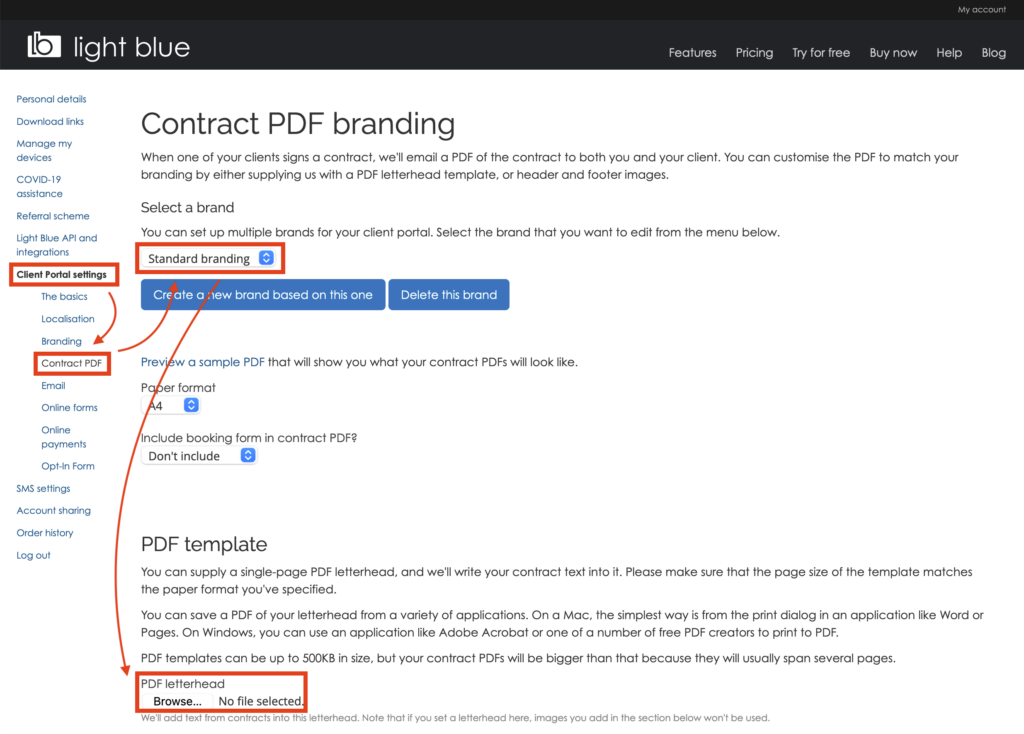
- Review how it looks by clicking on “Preview a sample PDF” and amend your margins as required.

4. Creating your email signature within the Light Blue desktop app
The final step in creating consistent branding across all your client communication is to add your email signature to the emails sent from Light Blue.
- Go to the “Email Signatures” section of Preferences.
- Either amend the ‘Example Signature’ already showing there or add another signature by clicking “Add Record”. You can include any details you like within your signature; business name, contact details, website links, or an image, though you can’t include any mail-merge tags.
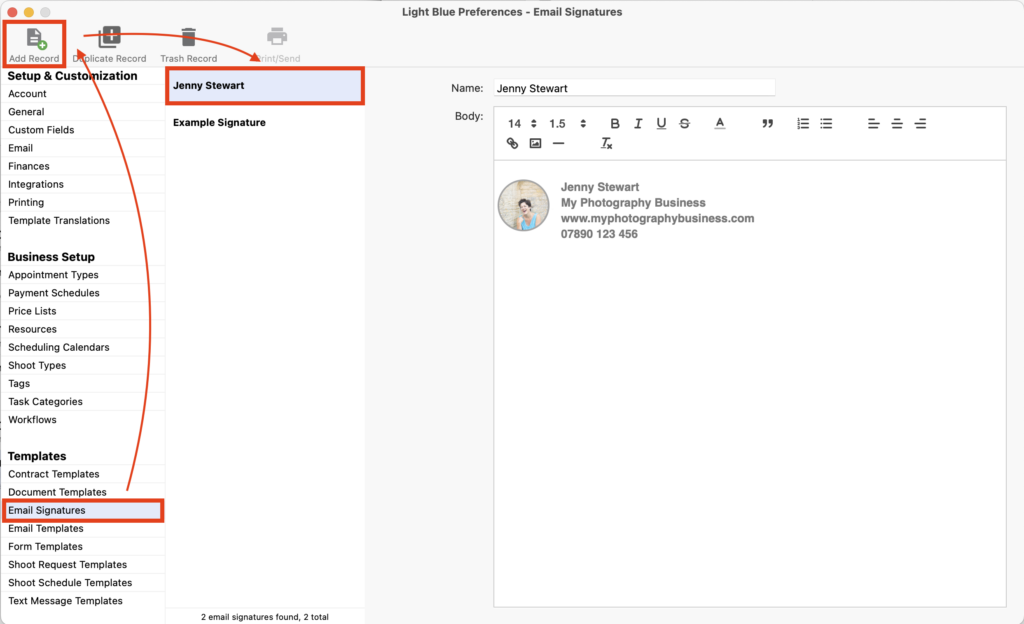
- Then go to the “Email” section of Preferences
- Make sure that the “Default Branding” is set to “Standard Branding” and the “Default Signature” is the email signature you’ve just sent up.
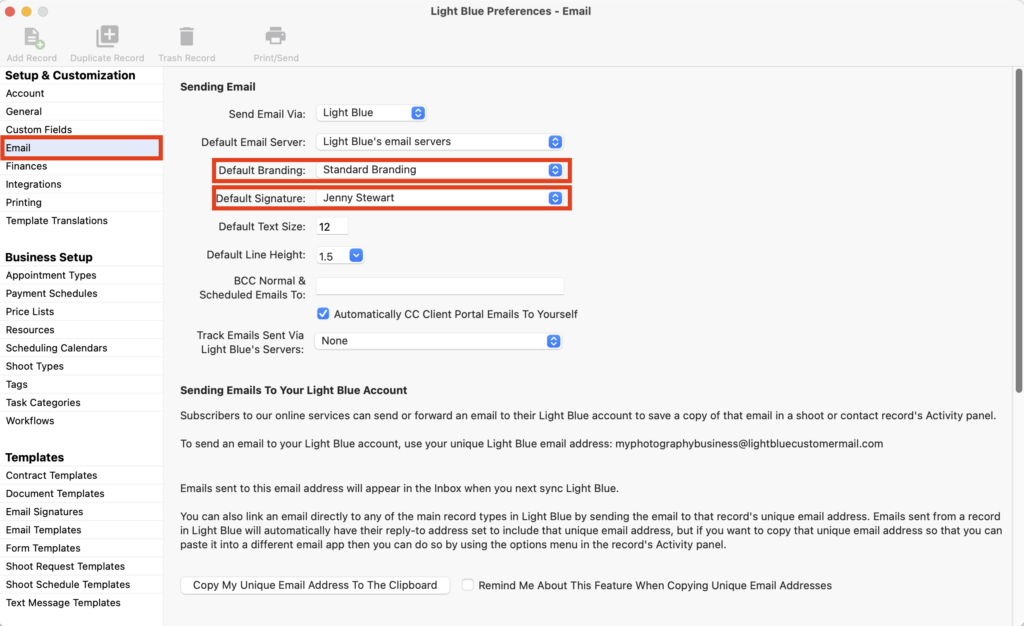
- Preview your email branding by sending a test email and making adjustments as necessary. Remember you may need to go back to section 2 to fine-tune it.
And there you have it! Beautiful branding set-up across all elements of Light Blue so your clients get a fabulous experience with all your communications!